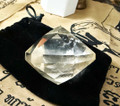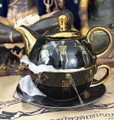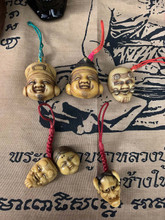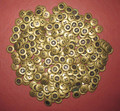 Loading... Please wait...
Loading... Please wait...- Home
- Voodoo Estate
- Lot of Six (6) Miniature Lucite, Japanese Noh Masks - A Main Library Find - The Voodoo Estate
Lot of Six (6) Miniature Lucite, Japanese Noh Masks - A Main Library Find - The Voodoo Estate
Product Description

It has now been just over twenty=three and a half years ago since we were called to do an estate that had been closed up for seventeen years!
The Voodoo Estate!
This type of call usually gets us excited as they are a treasure trove. Located here in Florida, there was no electricity or running water so we rigged our own lighting and in we went. If you have ever seen the Adams Family you will have some idea as to what we were greeted with! Then the attorney handling the liquidation gave us some background.
The estate had belonged to an alleged powerful Voodoo Priestess/JooJoo Exorcist, grand daughter of a Marie Laveau, and favored daughter of a Marie Glapion.
These names meant nothing to us, but the late night talk of Voodoo and exorcism in the old mansion was enough for us to spend the night in a hotel and return in the morning to assess the estate. The rest is history.
Our research has shown that this woman was what she claimed and was indeed descended from a long line of well known Vodoun family originating in New Orleans in the early 1800's.
We were pretty unnerved by this until we discovered they were also devout Catholics! Although I have to admit this was unlike any Catholic home we have ever been in and some of the items found inside were a little more than disturbing. There was no feeling of dread or unwelcome in the mansion, however there was quite a bit of contraband and other items we can or will not sell here.
This is one of a few lots from this estate we will be posting this week, so check our other listings!
We will, upon the new guardian's request, issue a named Letter of Authenticity with each lot from this estate, complying with the terms set forth to us by the estate's attorney.
~!~
Some Back Story
Found in a museum cased display of Japanese Noh masks in the Main Library, her inventory tells us all of the masks in this display were brought back from Japan by the 1898 LiDiex, who was part of the Allied Occupation of Japan after WWII. Unfortunately, the ledgers containing the history of the collection and her own comments are lost to the ages due to damaged ledgers.
Left on our own to research which revealed;
~!~
~!~
But Back to these Masks
Examination reveals a vintage lot of six hand finished miniature lucite Noh masks, most likely made by an artist or studio that specialized in noh masks as indicated by the unknown maker's mark on five of them.

Top row, from left to right, they are, to the best of our knowledge,
Otoko-men (Man masks)
Heida, chujo, juroku, hatachi-amari, doji, kasshiki, and yase-otoko are all examples of masks in this category which are classified according to social class and character.
The first mask is maker marked and measures approximately 1 5/16" x 1 1/4" x 3/4". It weigh 8.5 grams with green and yellow square plaited lanyard.
Okina - Old Man Mask
This type is only used for the piece called "Okina" performed in the New Year or for special occasions. It is a kind of ritual item derived from sarugaku, the classic form of the Noh, and it is said that this type was already used in the late Heian era (12th Century). It predates any other types of the Noh masks.
This one is also maker marked and measures approximately 1 1/4" x 1" x 1/2". It weigh 3.9 grams with green and yellow square plaited lanyard.
Second Row, left to right;
Okina Old Man and Onna - Woman Mask
They are both maker marked. The old man measures approximately 1 1/16" x 3/4" x 3/8" while the Onna measures approximately 15/16" x 13/16" x 3/8". They have a combined weight of 4.3 grams and share a green red square plaited lanyard.
Onryu - Ghost and Spirit Mask
This is the type that portrays incarnate spirits of dead persons. They include male ghosts such as Ayakashi, Yase-otoko and Kawazu, and female ones such as Yamanba and Deigan. They are all regretful and revengeful of this world. Hannya, one of the well-known type of the masks, is also classified into this group.
This one is not maker marked and measures approximately 1 1/8" x 13/16" x 9/16". It weigh 3.3 grams with a red square plaited lanyard.~!~
She installed a set very similar to these as button on a sweater!
This set is in near mint condition with no sign of damage or repair.
It is certainly an unusual lot of vintage Japanese artifacts with an extraordinary provenance that are much nicer than the photographs are able to depict.
~!~
We have been contacted and visited by a number of people who were interested in the items from this estate since our first batch was listed. Among the buyers have been known psychics and practitioners. More than one, after adorning themselves or handling their purchase, stated "this is a woman of power!" Many of our customers, after receiving items from this estate have reported dream contacts and other unexplained phenomenon.Unusual, authentic Voodoo Priestess Estate lot and at a bargain price!
This is truly a rare opportunity to own anything with attributes to this estate. The majority of this estate is now gone. Most of what we had left, and it was considerable, has been split up and sold to a couple of private, foreign collector practitioners that will never be available to the public again. We made the decision to do this as we have had some pretty strange visits from even stranger individuals and there have been enough unexplained phenomenon going on in the warehouse where her things were kept that many of our employees refused to go in there.
The pieces offered and sold here are some of the few remaining pieces that will ever be offered to the public.
Nice addition to any collection, altar or decor that displays really well.
Really doesn't get any better than this.
There are 8 photographs below to tell the rest of this tale.
Buyer to pay $0.00 for Insured Ground Shipping with Tracking, handling and lagniappe.
Rest assured your order will be carefully packed to withstand the onslaught of the most deranged of UPS or parcel carriers.
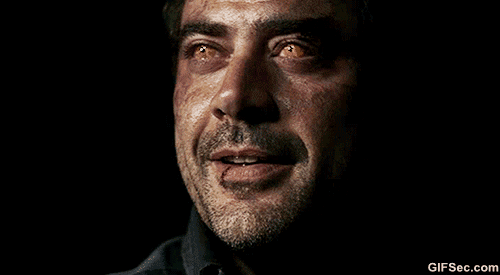
International Buyer's, Please email us for a Shipping Quote.
Payment is due at listing end.
Check our other listings, and sign up for our newsletter as new items are usually listed daily.












